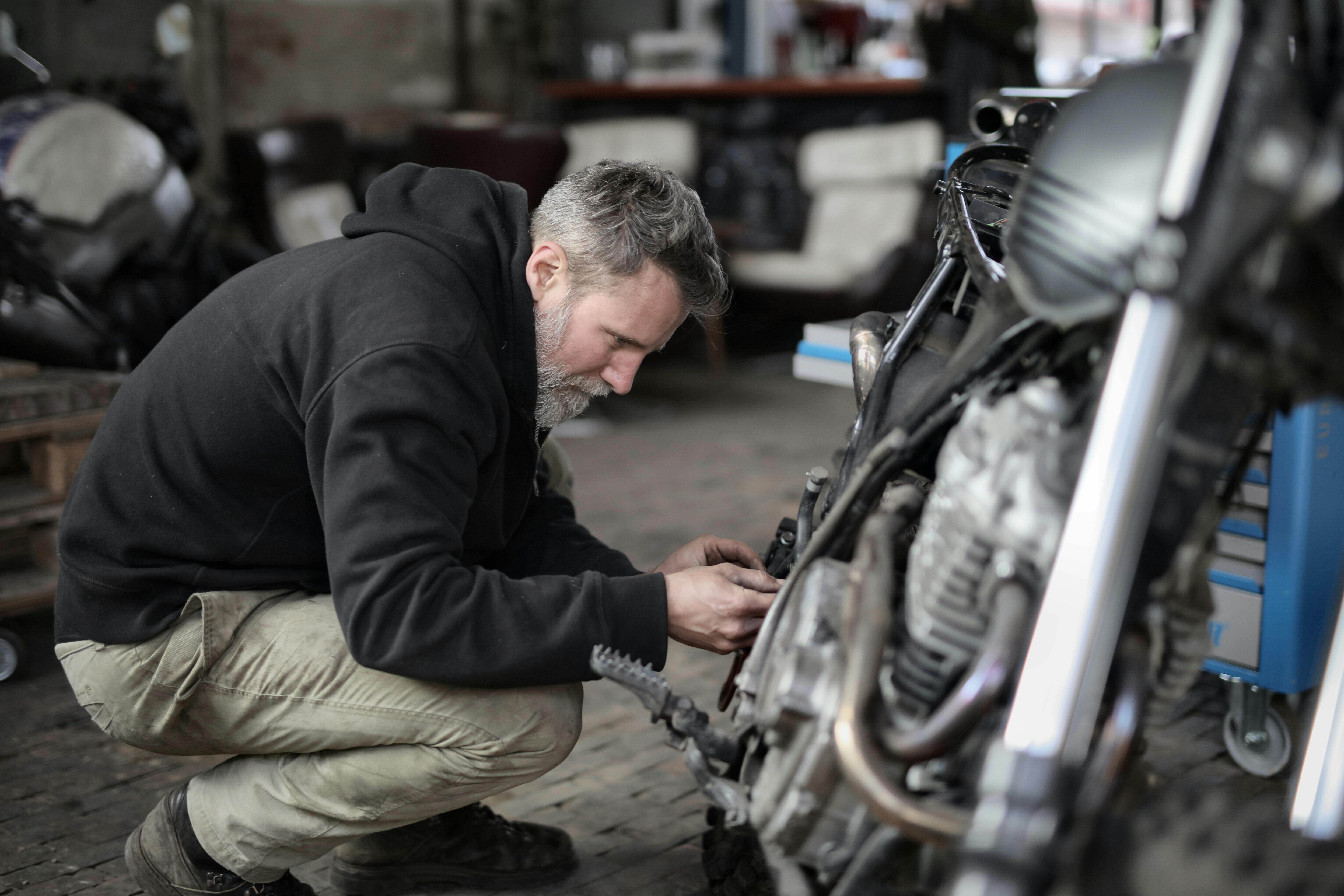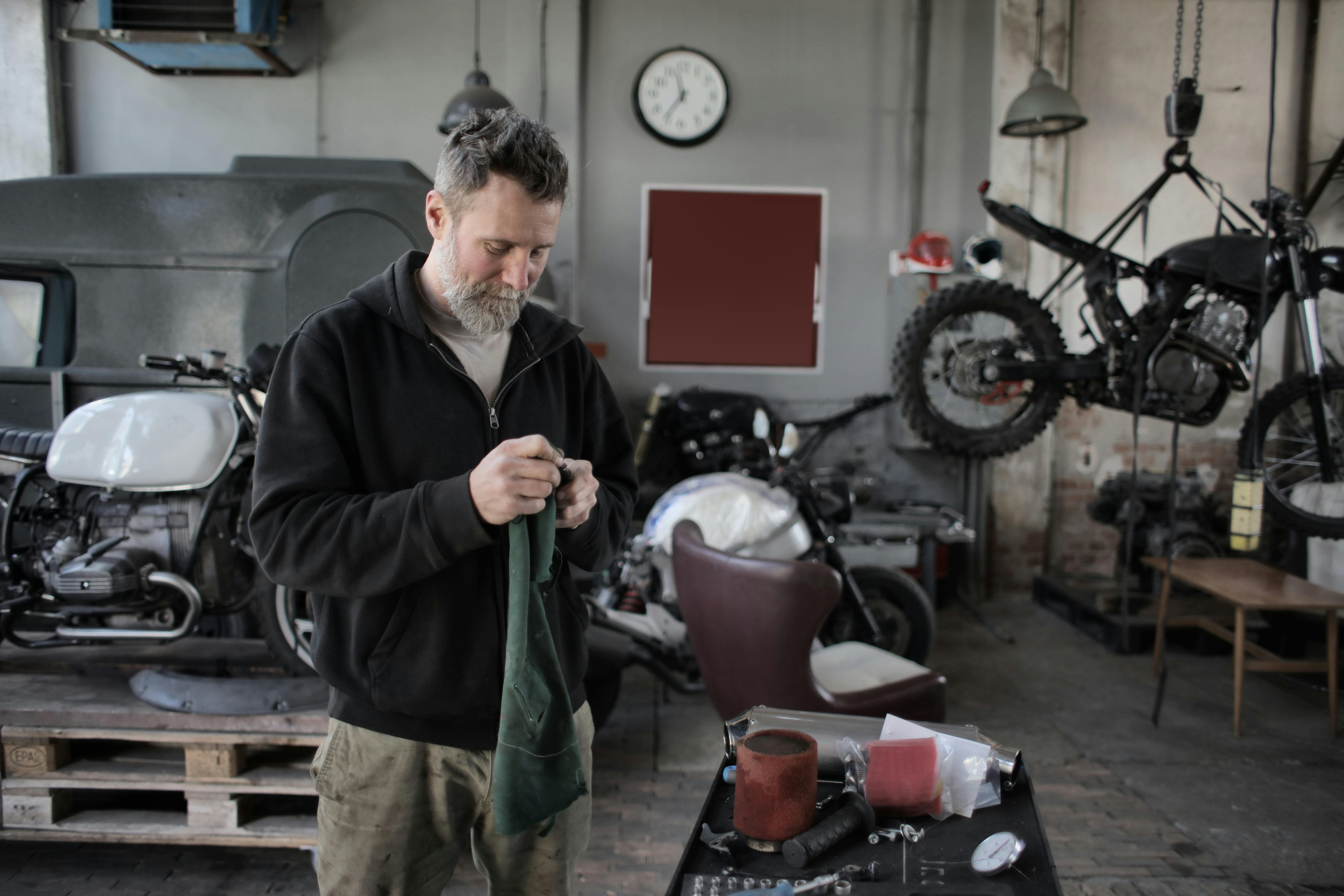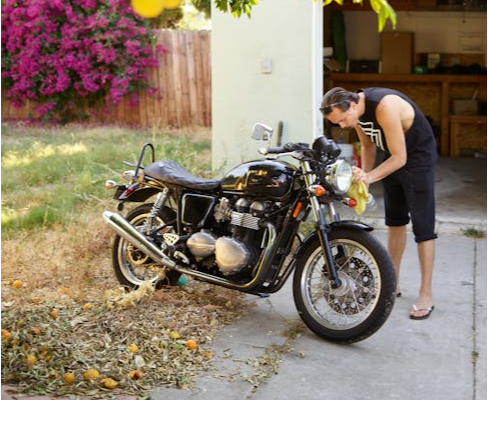Did you know that 60% of motorcycle failures happen because crucial maintenance steps are overlooked? That’s right—more than half of those dreaded breakdowns or sudden malfunctions occur because basic bike and bike maintenance routines get skipped or rushed! If you’re looking to save money in the long run, avoid inconvenient breakdowns, and enjoy a consistently smooth ride, adopting a step-by-step bike servicing approach can transform your experience—whether you’re working on your bike at home or between trips to your local bike shop. In this comprehensive guide, you’ll uncover easy-to-follow techniques for cleaning your bike, checking disc brakes and brake pads, fixing a flat, and much more—all tailored for every rider from casual cruiser to weekend road warrior.

Unlocking Smoother Rides: Why Step-by-Step Bike Servicing Is Essential (Did You Know 60% of Motorcycle Failures Are Due to Overlooked Maintenance?)
When it comes to motorcycling, step-by-step bike servicing is not just about keeping your ride shiny; it’s about guaranteeing reliability and safety every time you hit the road. The majority of avoidable mechanical failures—like worn brake pads, neglected chain and cassette, or under-inflated tires—stem from missed maintenance. A basic bike that receives regular, thorough attention stands a far better chance of performing well and lasting longer, whether it’s a daily commuter or a prized touring motorcycle.
Think of each servicing step as a shield against costly repairs, untimely breakdowns, and hazardous situations. By following a thorough checklist—cleaning your bike, inspecting key bike parts, and performing routine safety checks at home—you’re essentially putting money in the long term back into your pocket and adding years to your motorcycle’s lifespan. Regular servicing also allows you to spot hidden wear and tear that could otherwise interrupt a dream ride or daily commute.
Embracing these routines means you’re prepared for the unexpected, ready with the right tools, and confident when small adjustments or emergency repairs are needed. For any rider determined to keep their motorcycle in good working order and ensure a blissfully smooth ride, this methodical approach is the true game-changer.
-
What You’ll Learn in This Guide :
-
Comprehensive step-by-step bike servicing checklist
-
Key bike maintenance and repair processes for smooth rides
-
Best methods for bike cleaning at home
-
Important safety check protocols for motorcycles
-
How to fix a flat and repair disc brakes effectively
Understanding Step-by-Step Bike Servicing for Every Motorcycle Owner
What Makes Step-by-Step Bike Servicing Different from Routine Bike Maintenance?
The main distinction between step-by-step bike servicing and standard bike maintenance lies in the level of attention to detail. While routine maintenance often involves a cursory check of obvious components—like a quick look at the tire or a fast chain lubrication—true step-by-step servicing means methodically inspecting and addressing every part of your motorcycle. This includes everything from detailed cleaning your bike at home to checking the torque rating on critical bolts and ensuring the bottom bracket is tight and free from excess dirt and grime.
Taking a systematic approach ensures you won’t miss hidden issues, such as slight wear in your rear derailleur, hairline cracks in a brake pad, or sticky movement in the brake and gear cables. By spending a little extra time on a thorough check, you can catch problems before they develop into something that could lead you straight to the bike shop for costly bike repair. This attention to every step also empowers home mechanics to build knowledge, extending well beyond basic bike adjustments into advanced diagnostic and repair skills.
Moreover, a step-by-step routine provides structure to your bike at home care routine, making it easier to schedule tasks, stock up on essential bike maintenance supplies, and check off each process for consistent, reliable results every time.

The Benefits of Consistent Bike Clean and Maintenance Routines
Regular, structured bike clean and maintenance routines offer major benefits for every motorcycle enthusiast. Firstly, consistent servicing keeps your moving parts—chains, brake pads, cables—in peak working condition, preventing small issues from escalating. Well-maintained motorcycles have longer intervals between serious repairs, offer smoother gear changes, and guarantee effective braking response from both rim and disc brakes.
On top of performance, consistent bike cleaning keeps corrosive dirt and grime at bay, preserving the finish and structural integrity of your bike frame and parts. By protecting delicate systems like the disc brake and ensuring key bolts and connectors remain rust-free, you’re helping your motorcycle retain value while extending its functional life. Home bike mechanics also enjoy safety peace of mind; each session’s safety check minimizes risk of sudden component failure during rides.
Finally, these habits foster a deeper relationship between rider and machine. Understanding how each component works makes small adjustments and on-the-fly repairs more intuitive—saving your hard-earned money in the long run and boosting your confidence, wherever your journey takes you.
Essential Bike Maintenance Tools and Products for Effective Servicing at Home
-
Checklist: Must-Have Bike Repair and Servicing Tools
-
Wrenches and Screwdrivers
-
Chain Lubricant and Cleaners
-
Brake Pads and Disc Brake Tools
-
Pumps, Tire Levers & Puncture Kits
-
Safety Equipment and Gloves
Having the right tools is crucial for step-by-step bike servicing —especially for riders who prefer bike repair at home. At the bare minimum, you’ll need a well-organized toolkit featuring wrenches, screwdrivers (flat and Phillips), and Allen keys to address most bolt fixtures, as well as a bike stand to safely secure your motorcycle during checks and repairs. Quality chain lubricant and biodegradable cleaners keep moving parts free from dirt and grime, while specific disc brake tools ensure that servicing modern braking systems is both safe and effective.
For tire-related maintenance, ensure you have tire levers , a reliable air pump, and a puncture repair kit. These tools are invaluable when handling a fix a flat scenario. Good gloves and basic safety equipment also protect you from accidental injuries when working on sharper or moving components. Investing in these essentials makes your bike at home maintenance sessions efficient, safe, and comprehensive—putting you in control of your motorcycle’s condition.
Step-by-Step Bike Servicing: Preparing Your Bike at Home
Setting Up Your Home Workstation for Bike Servicing
Creating a dedicated workstation is the foundation for efficient bike maintenance and repair at home. Choose a well-lit, ventilated area—ideally a garage or shed—with easy access to all your tools. Arrange wrenches, screwdrivers, bike cleaners, and safety gear within arm’s reach, ideally using magnetic racks, bins, or a pegboard for neat organization. Position your bike stand securely so your motorcycle is upright and stable, making it easier to access every angle of the bike frame while minimizing the risk of accidental falls or scratches.
Ensure there’s sufficient space for laying out small parts during disassembly and cleaning. Keep towels and cleaning products close at hand; disposable gloves protect your hands and prevent oil and residue transfer. With everything organized, servicing tasks—from checking your bottom bracket to inspecting brake pads or disc brakes—will move quickly and smoothly, giving you more confidence to tackle even unfamiliar maintenance processes.
An Initial Safety Check: Key Steps for Reliable Motorcycle Maintenance
Before beginning a full bike servicing session, an initial safety check is essential. Start by looking over the bike frame for cracks, rust, or any visible damage, paying close attention to the weld points and mounting brackets. Check the tires for cuts, uneven wear, or embedded debris, and make sure the tire pressure is within recommended limits using a reliable gauge. Spin both wheels to check for wobble or rim damage and ensure the wheel nuts or axles are tight and secure.
Test all lights and the horn, and manually operate the front and rear brakes, feeling for any stiffness, squeal, or spongy response—often an early sign of air in the brake fluid or worn brake pads . Confirm that the handlebars move smoothly and that the steering is neither too tight nor too loose. By addressing these points, you’re already eliminating several of the most common causes of sudden breakdowns before deeper maintenance even begins.

Cleaning Your Bike: The First Step in Step-by-Step Bike Servicing
-
Quick List: Best Practices for Bike Clean and Maintenance
-
Use Biodegradable Cleaning Agents
-
Clean Hard-to-Reach Components
-
Protect the Chain and Disc Brakes During Washing
-
Dry and Lubricate After Cleaning
Every step-by-step bike servicing session should begin with a thorough bike clean. Start by rinsing the frame, wheels, and undercarriage using a low-pressure garden hose to remove surface dust and loose dirt and grime. For stubborn buildup, use a sponge or soft brush with biodegradable bike cleaner—never harsh dish soap—as it can strip protective finishes and dry out plastic or rubber parts. Pay special attention to crevices around the chain and cassette, gear sprockets, and disc brakes, where debris tends to accumulate.
Remember to shield delicate parts like the chain and disc brake rotors from excessive water or spray. You can do this by covering them with a clean cloth during washing or by using minimal water in those areas. Once cleaned, dry your bike thoroughly, especially around the moving parts, to prevent rust and corrosion. Apply chain oil and re-lubricate the necessary components immediately after drying. This not only keeps everything running smoothly but also acts as a protective barrier against residual moisture. Regularly cleaning your bike ensures that you’re always working with a dirt-free machine, allowing more accurate inspections and prolonging the lifespan of every part.
Detailed Inspection During Step-by-Step Bike Servicing: What to Look For
Safety Check: Ensuring Brakes, Tires, and Suspension Are Roadworthy
During your step-by-step bike servicing , a focused inspection of safety-critical systems is vital. Start with the brakes—both disc and rim brakes. Look for uneven wear or thinning of the brake pads , and check the brake fluid reservoir for correct levels (for hydraulic systems). Squeeze the levers and listen for grinding or squealing; these sounds can warn of worn-out surfaces. Move on to the tires, checking for embedded stones, cracks, and overall tread depth. Press down on the suspension to ensure smooth bounce and no oil leaks or abnormal creaks.
Even with regular bike maintenance at home, don't overlook the connection points between wheels and the bike frame. Confirm nuts, quick-releases, or axles are tight and the wheels rotate without side-to-side wobble. Finally, test the steering by turning the handlebars—any resistance, wobble, or clicking could indicate issues with the fork, headset, or front wheel assembly. A thorough safety check before and after rides can mean the difference between an enjoyable journey and a stressful roadside problem.
Inspecting Cables, Chains, and Gear Functionality
The longevity of your motorcycle heavily depends on the condition of its cables, chain, and gear components. Begin by running your hand along each cable, feeling for fraying or rust near the ends, particularly where they enter the casing. Next, inspect the chain for clean links, even stretching, and a lightly-oiled sheen. Spin the rear wheel and check the chain’s movement across the sprockets; any skipping, tight spots, or excessive play suggests it’s time for a replacement or adjustment.
Shift through all gears, monitoring the smoothness and accuracy of the front and rear derailleur travel. A sticky barrel adjuster or misaligned derailleur can lead to poor shifting and added wear on the cassette and chainring. By catching minor cable and gear issues early, you save yourself larger, costlier bike repair jobs down the road and maintain that signature smooth ride every enthusiast seeks.
How to Fix a Flat Tire: Bike Repair for Home Mechanics
Repairing a flat tire is a vital skill in any step-by-step bike servicing toolkit. Begin by removing your wheel—usually with the aid of a wrench or quick-release lever—then use tire levers to slip the tire bead over the rim. Inflate the tube slightly and look for punctures or holes by feeling for escaping air or submerging the tube in water (bubbles indicate the leak). Dry and patch the hole with a puncture kit, following the manufacturer’s instructions for bonding and setting time.
Inspect the inside of the tire and the rim strip for sharp debris, glass, or thorns; even the smallest item left behind can quickly trigger another flat. Once the patch is secure and the area is dry, reassemble and inflate the tire to the proper PSI (noted on your tire’s sidewall). Spin the wheel to ensure it seats evenly without bulges or hop. With practice, this simple but critical step can be done at home in minutes, sparing you both downtime and an emergency trip to the bike shop.
Disc Brake and Brake Pad Maintenance in Step-by-Step Bike Servicing
Troubleshooting and Servicing Disc Brakes and Pads
Disc brakes offer superior stopping power, but only if properly serviced. Begin by carefully removing the wheel and using a flashlight to examine the pads’ thickness and contact surface. Worn out or uneven brake pads need to be replaced immediately; they should not be less than 1mm thick. Check for scraping, squealing, or a pulsing sensation in the lever, all of which can suggest a warped rotor, air in the brake line, or contamination on the pad surface.
When replacing pads, clean the caliper and rotor with isopropyl alcohol to remove grease and dirt. For hydraulic systems, monitor brake fluid levels and bleed the line if you feel any sponginess at the lever. Examine all mounting bolts for correct torque rating to avoid loose or overtightened parts. With routine disc brake servicing, you’ll enjoy confident stops and peace of mind in traffic or on twisty roads.
Lubricating and Adjusting Key Components in Bike Maintenance
Chain Lubrication and Gear Adjustment Techniques
Proper chain lubrication is fundamental for smooth, efficient riding and the long-term health of your drivetrain. After cleaning and drying, apply a dedicated chain oil, rotating the pedals to ensure every link gets coated. Wipe away excess oil with a clean rag—too much attracts dirt and increases wear and tear.
For gear adjustments, begin with the barrel adjuster on the derailleur to fine-tune cable tension. Small adjustments here can eliminate most issues with missed shifts or gear skipping. Inspect the rear derailleur for alignment and the condition of jockey wheels. Periodically check the chain and cassette for excessive stretch or tooth wear, replacing worn components to maintain sharp, reliable shifting action and maximum efficiency from your bike maintenance routine.
Headset, Bottom Bracket, and Suspension Maintenance Steps
Beyond the obvious moving parts, don’t overlook the bearings and structural support systems of your motorcycle. Begin by checking the headset bearing for smooth, play-free rotation; if you feel any notchiness or hear grinding, disassemble, clean, and lubricate, or replace the bearings as needed. Next, ensure the bottom bracket (the axle area at the crank) rotates without resistance or wobble—a gritty feeling here signals dirt intrusion or worn bearings.
Suspension maintenance involves checking for oil leaks, corrosion, or bent stanchions. Clean stanchions with a microfiber towel and inspect for seal leaks after each bike clean. Regular attention prevents catastrophic failure, especially on rough or variable terrain, and keeps your ride handling like new.
Step-by-Step Bike Servicing for Electrical and Lighting Systems
Testing and Replacing Bulbs and Battery Check
Reliable lighting and electrical systems are key to safety and visibility. Start each servicing session by turning on headlights, brake lights, and indicators to confirm all bulbs function, noting any flicker or dullness. Replace any failing bulbs with new ones meeting the manufacturer’s specifications. Check the horn for prompt, loud response—weak or nonfunctioning horns often point to battery or wiring issues.
For battery checks, use a voltage meter to measure resting and load voltages. Corroded terminals should be cleaned with baking soda solution and a small wire brush. Replace the battery if it fails to hold charge or delivers less than the required voltage under load. Secure all harnesses and inspect for exposed or pinched wiring—a proactive step that can prevent unexpected electrical shorts and delivery failure while on the road.
Final Safety Check After Completing Step-by-Step Bike Servicing
-
Checklist for Pre-Ride Bike Safety Check
-
Lights and Horn Test
-
Brake Response Analysis
-
Tire Pressure and Wheel Check
-
Cable and Chain Integrity
After completing your step-by-step bike servicing routine, conduct a comprehensive pre-ride check. Turn on all lights and check the horn for strong, consistent sound—a failing electrical system can jeopardize your safety in low-visibility scenarios. Next, gently squeeze both brake levers, checking for a sharp, confident response without fade. Inspect tire pressure and wheel trueness, spinning each wheel to confirm roundness and immediate stop when the brake is applied.
Finally, run your hand over all exposed cables and the chain, ensuring there are no snags, fraying, or tight spots. This swift but structured inspection confirms that your bike is ready for another safe, smooth, and enjoyable ride.
Basic Bike Troubleshooting: When to Call a Professional After Step-by-Step Bike Servicing
"A well-maintained bike not only extends its lifespan but keeps you and others safe on the road." - Motorcycle Servicing Expert
No matter how methodical your bike maintenance routine, some problems require professional intervention. If persistent issues arise—such as chronic electrical failures, ongoing disc brake fade, deep-seated bottom bracket rattles, or unexplained loss of performance—contact a certified bike mechanic or visit your trusted bike shop. Serious frame cracks, advanced suspension leaks, or major wiring faults generally need specialized tools, replacement parts, and experience beyond most bike at home setups. Knowing your limits ensures safety and helps avoid further (and costlier) damage to your motorcycle.
People Also Ask About Step-by-Step Bike Servicing
How often should I perform step-by-step bike servicing?
It’s recommended to perform a full step-by-step bike servicing at least once per month for regular riders. However, partial cleaning your bike and checking critical components like tire pressure, brake pads, and the chain should be done every 2-3 rides—especially before long journeys or riding in harsh conditions. Seasonal changes and increased mileage may require more frequent checks.
What are the essential components of bike maintenance at home?
Home bike maintenance should include cleaning your bike, lubricating the chain, checking brakes (including disc brake and rim brakes), inspecting cables and gear systems, adjusting tire pressure, and ensuring all bolts are torqued to specification. These tasks help keep your bike in good working order and prevent major issues from developing.
Can I use household products for bike cleaning during servicing?
While some household products like mild dish soap can be used sparingly, it’s best to opt for cleaners specifically formulated for bike parts. Harsh detergents may strip away protective finishes or corrode sensitive components. Biodegradable cleaners are recommended for cleaning your bike, as they are environmentally friendly and won’t damage materials.
How do I know if my disc brakes need repair or replacement?
If your disc brakes squeal, feel spongy, or the lever travels too far before engaging, it’s time to inspect the brake pads and rotors. Look for thinning pads (1mm or less), visible grooves or cracks on the rotor, and any signs of fluid leaks. Persistent issues after pad replacement often signal it’s time for professional service.
Expert Answers: Frequently Asked Questions on Step-by-Step Bike Servicing
-
FAQs :
-
Does step-by-step bike servicing improve fuel efficiency?
Absolutely. Well-lubricated chains and properly inflated tires mean less resistance and smoother movement—directly improving fuel efficiency over time. -
What safety checks are most often overlooked in home bike maintenance?
Cable fraying, loose axle bolts, and under-lubricated chains are among the most missed checks. systematic inspection ensures even these hidden risks are addressed, keeping your ride safe and reliable. -
Is professional tuning necessary after basic bike repair at home?
It’s not always necessary, but complex repairs—like advanced brake or suspension work—do benefit from a professional’s eye, ensuring the highest safety standards are met before hitting the road.
|
|
|
Table: Step-by-Step Bike Servicing Checklist |
|
Task |
Frequency |
Tools Needed |
|---|---|---|
|
Bike clean and wash |
Every 2 weeks |
Biodegradable cleaner, cloth |
|
Chain lubrication |
Weekly |
Chain oil, brush |
|
Brake check (disc brakes) |
Monthly |
Allen key, brake fluid |
|
Tire pressure & fix a flat |
Pre-ride/As needed |
Pump, patch kit |
|
Full safety check |
Monthly |
General toolkit |
Keep Your Motorcycle Ride Smooth with Routine Step-by-Step Bike Servicing — Call Us Today: 847-458-4858
Ready for smoother, safer journeys? Make step-by-step bike servicing a habit and experience the confidence of a perfectly tuned machine with every ride. Call us today: 847-458-4858 for expert support or to schedule a professional tune-up!
Regular, step-by-step bike servicing is crucial for maintaining your motorcycle’s performance and safety. To assist you in this process, here are two comprehensive guides that offer detailed instructions:
-
DIY Bike Service: How to Service a Bike at Home
This guide provides a thorough checklist for home bike servicing, covering essential tasks such as cleaning, wheel and tire inspections, brake maintenance, and bolt checks. It emphasizes the importance of regular cleaning to prevent damage and offers step-by-step instructions for each maintenance task. -
DIY Bike Maintenance: A Step-by-Step Guide
This resource outlines fundamental maintenance steps, including cleaning, lubricating the chain, checking tire pressure, adjusting brakes, and inspecting bolts and nuts. It provides clear, easy-to-follow instructions suitable for beginners and highlights the importance of regular upkeep to ensure a safe and enjoyable riding experience.
By following these guides, you can develop a consistent maintenance routine that enhances your motorcycle’s longevity and performance. Regular attention to these tasks will help you identify potential issues early, ensuring smoother and safer rides.
 Add Row
Add Row  Add
Add 



Write A Comment